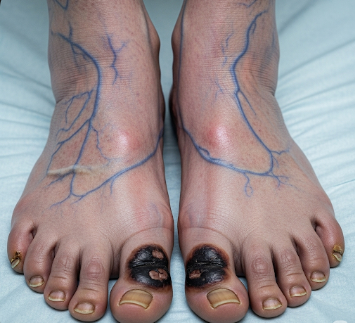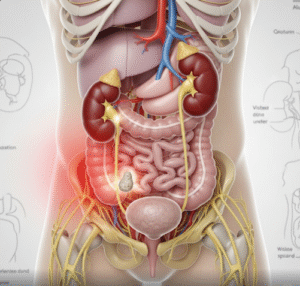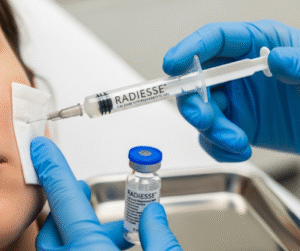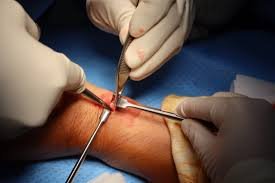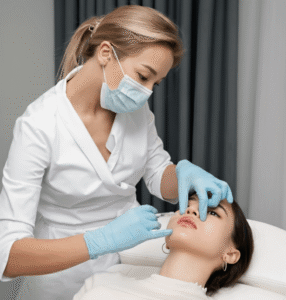Overview
Buerger’s Disease, also known as thromboangiitis obliterans, is a rare vascular condition characterized by inflammation and clotting in small and medium-sized arteries and veins, primarily in the hands and feet. The disease can lead to pain, tissue damage, and in severe cases, gangrene.
In Korea, Buerger’s Disease is diagnosed and managed in specialized vascular and cardiology centers, with emphasis on early detection, lifestyle modification, and preventing limb loss. Korean healthcare integrates medications, interventional procedures, and patient education to manage this chronic condition effectively.
What is Buerger’s Disease?
Buerger’s Disease is a non-atherosclerotic inflammatory vascular disorder. It causes:
- Segmental inflammation of small and medium arteries and veins
- Thrombus (clot) formation, obstructing blood flow
- Tissue ischemia, resulting in pain and skin changes
- Chronic ulceration or gangrene in affected limbs
The exact cause is not fully understood, but it is strongly associated with tobacco use, including smoking and smokeless tobacco.
Symptoms
Symptoms vary depending on disease severity and location of blood vessel involvement:
- Claudication (pain in the hands or feet during activity)
- Rest pain, especially in fingers and toes
- Cold or numb extremities due to reduced blood flow
- Skin changes, including color changes (red, blue, or pale)
- Ulcers or sores on fingers, toes, or limbs
- Gangrene in severe, untreated cases
- Superficial vein inflammation, sometimes visible under the skin
- Swelling and tenderness in affected areas
Symptoms often worsen with continued tobacco use and may improve partially with cessation.
Causes
The primary cause of Buerger’s Disease is tobacco exposure, which triggers immune-mediated vascular inflammation. Other contributing factors include:
- Genetic susceptibility, as the disease is more prevalent in certain populations
- Immune system dysregulation, leading to vessel inflammation
- Environmental triggers, such as chemical toxins or pollutants
- Hypercoagulable states in rare cases
Smoking and tobacco use are almost universally present in patients with Buerger’s Disease, making cessation the most critical intervention.
Risk Factors
- Tobacco use, including cigarettes, cigars, and smokeless tobacco
- Male sex, particularly aged 20–40 years
- Genetic predisposition, especially in certain Asian and Middle Eastern populations
- Chronic inflammation or autoimmune conditions
- Occupational exposure to chemicals that may irritate blood vessels
Complications
Without proper management, Buerger’s Disease can lead to serious vascular and tissue complications:
- Chronic pain and disability from reduced blood flow
- Non-healing ulcers on fingers and toes
- Infections in ischemic tissue, potentially leading to cellulitis or osteomyelitis
- Gangrene, often necessitating amputation
- Reduced quality of life due to chronic pain and mobility limitations
- Secondary cardiovascular complications, including thrombotic events in rare cases
Prevention
Preventive strategies focus on tobacco cessation and vascular health maintenance:
- Complete cessation of smoking and all tobacco products
- Avoiding second-hand smoke exposure
- Regular exercise to improve circulation
- Healthy diet to support vascular health
- Prompt treatment of minor injuries to prevent infection in ischemic areas
- Monitoring vascular health with regular check-ups and imaging studies
- Stress management, as stress may worsen vascular inflammation
Treatment Options in Korea
Diagnosis
Diagnosis involves clinical evaluation, imaging, and laboratory tests:
- Medical history, with emphasis on tobacco use and symptoms
- Physical examination, noting ulcers, gangrene, or skin discoloration
- Doppler ultrasonography to assess blood flow in affected arteries and veins
- Angiography for detailed visualization of arterial blockages
- Blood tests to rule out other causes of vascular inflammation, such as autoimmune diseases or clotting disorders
Medical Management
Treatment focuses on symptom relief, preventing progression, and promoting healing:
- Strict tobacco cessation, which is essential for halting disease progression
- Medications to improve blood flow, including vasodilators and antiplatelet agents
- Pain management, including NSAIDs or other analgesics
- Antibiotics if infections develop in ulcers or gangrenous tissue
- Wound care for chronic ulcers to prevent infection and promote healing
Interventional and Surgical Therapies
Advanced treatments are available in Korean vascular centers:
- Angioplasty or bypass surgery to restore blood flow in severe cases
- Sympathectomy, a surgical procedure to improve circulation in hands or feet
- Amputation, in cases of gangrene where tissue cannot be saved
- Stem cell therapy or experimental interventions in select tertiary care centers
Supportive Care
- Compression therapy and elevation of affected limbs
- Physical therapy to maintain mobility and prevent stiffness
- Education on foot and hand care, including regular inspection for sores
- Lifestyle modifications, including exercise, nutrition, and stress reduction
Prognosis
The prognosis of Buerger’s Disease depends largely on tobacco cessation and early intervention:
- Patients who quit smoking often experience slowed progression and symptom improvement
- Chronic cases with delayed treatment may require amputation or other surgical interventions
- Regular follow-up in Korean vascular clinics ensures monitoring of disease progression and timely treatment of complications
- Multidisciplinary care, including cardiology, vascular surgery, and rehabilitation, improves quality of life and limb preservation
With early detection, strict tobacco cessation, and comprehensive medical management, Buerger’s Disease in Korea can be effectively controlled, allowing patients to maintain limb function, reduce pain, and prevent severe complications.

